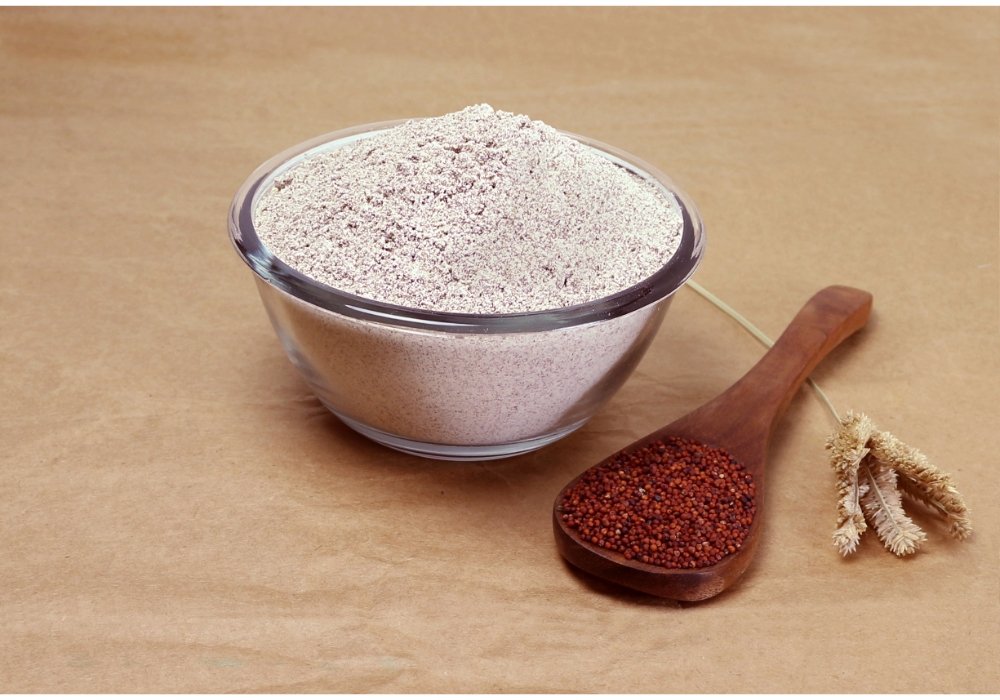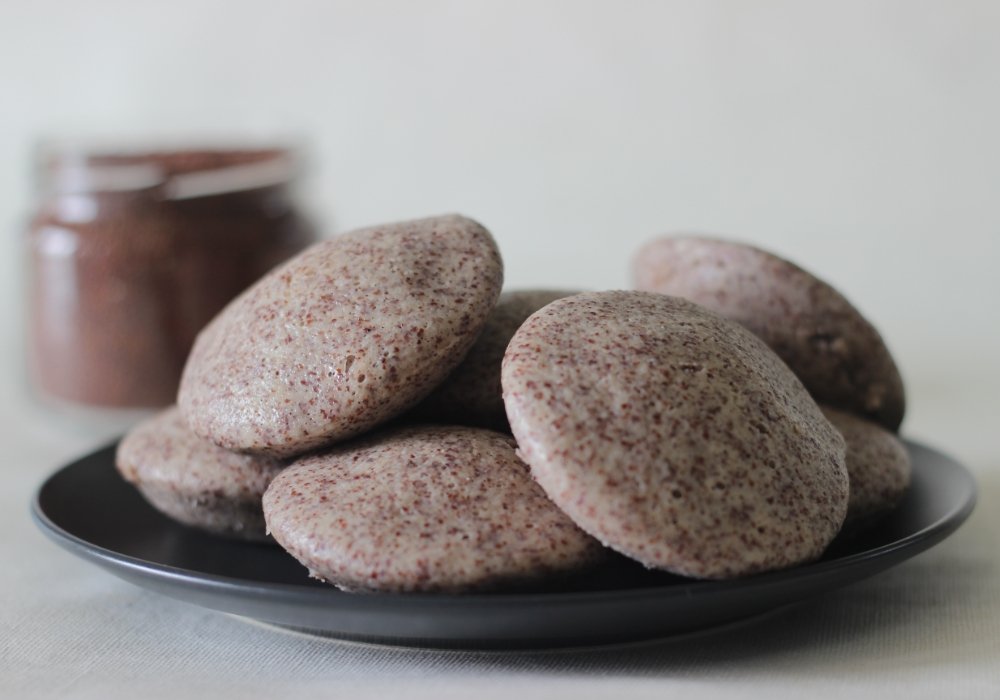2023 is the Year of Millets. Prominent among the millets available in India is ragi, also known as Finger Millet. Grown predominantly in Karnataka, Ragi is a rich source of various nutrients. This makes it one of the preferred weaning food for babies in India. Let us explore the nutritional value and health benefits of Ragi based on research and studies.
Nutritional Profile Of Ragi

The nutritional profile of Ragi, as per USDA Nutrient Database is as follows-
| Nutrient | Value Per 100 gm |
|---|---|
| Carbohydrates | 72.6 gm |
| Protein | 7.7 gm |
| Fat | 1.5 gm |
| Fibre | 3.6 gm |
| Ash | 2.7 gm |
| Calcium | 344 mg |
| Phosphorous | 250 mg |
| Iron | 6.3 mg |
| Manganese | 3.5 mg |
| Magnesium | 130 mg |
As you can see, Ragi is a carbohydrate-rich food that is a good source of protein and calcium. In fact, it has higher calcium content than any other cereals. Further, its protein content is more balanced with a higher percentage of essential amino acids like lysine, threonine, and valine compared to other millets.
Let us now take a look at the health benefits of Ragi based on the nutritional value and researches.
Health Benefits Of Ragi
Improves Gut Health
Ragi contains functional fibre that are resistant starch. They escape enzymatic digestion and provides fermentable carbohydrate for gut bacteria. This results in production of desirable short-chain fatty acids like butyrate which improves gut health and acts as a preventive mechanism for colon cancer.
Helps In Controlling Weight
100 gm of Ragi contains 220 mg of tryptophan, which makes up around 20-25% of required daily intake. Low level of Tryptophan, which is one of the essential amino acids may affect the biosynthesis of serotonin which in turn could cause mood disturbances. These mood disturbances manifest in carbohydrate craving, which in turn could sabotage your weight loss endeavours.
Tryptophan levels may go down on a low calorie diet. So incorporating ragi in your diet may compensate for it, thus curbing cravings and helping in your weight loss journey.

Improves Hemoglobin In Babies
Studies have found that supplementing baby food with germinated ragi based food shows a general improvement in hemoglobin in babies.
Reduces Inflammation
Ragi’s outer surface is rich in phenolic compounds like ferulic acid, caffeic acid and vanillic acid. They have anti oxidant effect which means they neutralize free radicals, which in turn reduces inflammation. Increased inflammation can result in several health conditions like immune diseases, arthritis, cancer etc. Though ragi cannot prevent these diseases, it helps improve overall health by reducing inflammation.
Helps In Better Sugar Control
Studies have found that ragi based diet lowers blood sugar level, mean peak rise and area under curve due to higher fibre content compared to rice and wheat. Ragi does this by inhibiting enzymes like α-glucosidase that aid in absorption of carbohydrates in small intestine.
Improves Bone Health
Ragi has highest calcium content among other cereals. Hence, incorporating a ragi based diet will enhance calcium consumption, thereby improving bone health. This may reduce chances of developing osteoporosis and rickets.
Helps In Controlling Cholesterol
Ragi contains essential amino acids like Lecithin and Methionine which reduces cholesterol level by eliminating excess fat from liver. It also contains Threonine which is an amino acid that hinders fat formation in liver, thus reducing cholesterol.
Apt For Those With Celiac Disease
Being gluten-free, ragi is a healthy alternative for those with celiac disease and other gluten-sensitivities.
Related reading: Health Benefits of Rajma
Health Benefits of Moth Flour
How To Increase Ragi Intake In Your Daily Diet?

Ragi can be consumed in many forms. In Karnataka, Ragi is an integral part of diet. Ragi ball is one of the common breakfast options among Kannadigas. In addition, there are numerous ways to increase ragi intake in your daily diet.
- Ragi in powdered form can be added to wheat flour to make chapati and phulkas. It can also be added to idli and dosa batter, while making puri, idiyapam and other breakfast delicacies.
- Germination of ragi improves bioavailability of nutrients. It also improves concentration of carbohydrates, minerals and other essential amino acids. Flour made using germinated ragi can be added to dough and batter to increase nutritional content.
- Ragi can be added with while making cake and healthy cookies. Not only are they delicious, but also healthier. As ragi doesn’t have gluten, you should add wheat flour for getting the right texture and consistency for baked goods.
- Soaked ragi can be ground in mixer grinder and stirred with coconut milk and sweetener to prepare weaning food for babies.
- Ragi can be added with flour to make pasta products which are much more healthier.
- Several brands make chips, snacks and cookies based on ragi. While some of them aren’t exactly healthy due to addition of sugar and other additives, a few options made by health-conscious brands aim to provide healthier snack alternatives.
- Ragi can be used as base for making several fried food like papad, murukku, pakoda, vada etc.
